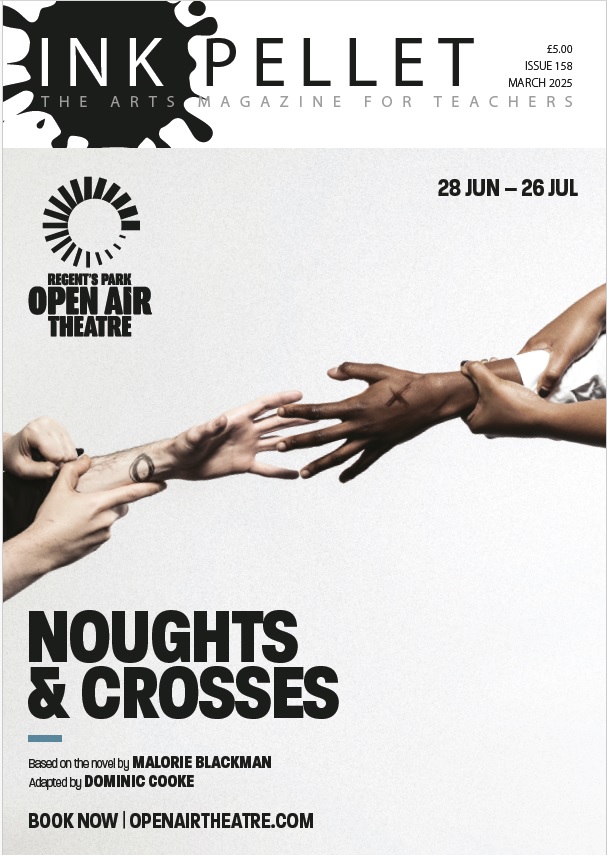There was great delight among writers when Creative Writing was introduced as an A Level. Here, SHARON STEAD shares her experience of teaching the new qualification for the first time…
This goes out to anyone teaching AS Creative Writing for the first time this year. Chances are you will be nearing the coursework final draft stage as this forms the bulk of the course content. You’ve doubtless spent the best part of the year developing creativity and confidence in your students. You’ve cajoled, inspired, prodded, work-shopped, pummelled and polished. Their prose and poetry has, maybe for the first time, an audience with whom they’ve learned to trust their inner-most voice. They feel validated as writers and we feel magnificent. Right?
But of course, this is only part of the story. 60% to be exact. The remainder of their AS course is made up of the less glamorous but nonetheless, potentially rewarding exam component. Writing on Demand might initially seem to go against everything else you’ve been encouraging in your students for their coursework portfolios. ‘Give yourself space and time’, we have said. ‘Stop the white noise and listen to your inner voice’, ‘be playful with words’, ‘explore’ ‘have fun’ … Now we seem to be saying ‘know your audience’, ‘stick to the brief’, ‘edit as you write’, ‘do it really, really quickly’, ‘and do not exceed much over 300 words’. No wonder they get nervous.
It’s a big ask. Indeed, it’s more than likely that even a hardened hack in a Soho editorial office would have some idea of who on earth he’s writing for an hour before a deadline. So yes, it’s a challenge. But the good news is that there are ways your students can capitalise on all of their free writing experience, fulfil a brief with clear and tight precision, and still produce a piece that is ambitious and imaginative.
It’s worth us remembering that AS Creative Writing students come to us having been dragged through the GCSE Language paper which, (can I say this publicly?) can be a bit dull (too late). They were up against it time-wise, having had to gen up on so many writing purposes that it probably felt they never really got to intensively study the nuances of any form, purpose and audience beyond the mechanics. Yet they are, just a year later, asked to emulate professional feature writers, marketeers, Public Relations specialists or columnists – and all against the clock.
Many CREW teachers also teach Literature; indeed it’s perhaps the specialism in which most of us hold degrees. It is territory we can navigate. We explore texts, we discover critical material, we immerse ourselves in the canon, the genre, the themes and contexts. It’s all there – we invite students to draw it out. Conversely, the blank page of the Creative Writing student can feel like a wilderness, with notional, vague, approximate signposts leading everywhere and nowhere. Reading lists – while only as strong as the reading matter on it – are crucial in exposing students to different styles from Bill Bryson, Louis Theroux and Giles Coren, to India Knight, Truman Capote and Alison Pearson. Students must read, read, read, exploring and emulating a range of voices and creating their own repertoire of style, tone for themselves.
For Writing on Demand, students have to create the work from a brief that is designed to surprise and draw upon skills rather than knowledge – and they need to bring into play all you have taught them about finding an authentic voice. This is the key. All of those character studies, hot-seating exercises, tasks on structure, pitch and pace… these are not just for the coursework portfolio. They are crucial to the success of the writing on demand task. To find a voice they will need to establish a connection with their subject so they can explore it beneath surface level. Are they trying to persuade their readers of something? Change their minds? Just make them think? Having an authentic voice will stop their writing become a diatribe or worse – a gushing, pantomime voice of the supposed advertiser.
The formality of the piece can sometimes cause confusion. Students used to crafting formal academic essays sometimes find that transition to a more personal, conceptualised piece of writing really tough. Of course it depends on the brief but generally, my advice would be to get students to write looser. Not with lazy grammar nor bland vocabulary. Any informality must be a confident, active style choice. We don’t know what will come up in future exam papers, but so far on this new course, nobody has asked for a formal essay.
On the subject of weary vocabulary, I have noticed that some students, in the panic of the timed exam, can slip into cliché. I think they sometimes actually feel they are using it ironically. But an ironic cliché remains a cliché – so is best avoided. A tip from me is to establish a cliché corner notice-board. I have one in my classroom on which any gem I receive from a student gets plastered up on the wall. Some girls see it as a badge of honour to make it onto the board (irony once again being the language of the teen) – but I know they have their cliché radar on full as they enter the exam and that’s all that matters.
Sharon Stead is a former journalist and Communications Manager. She is now Head of English at Surbiton High School and Network Leader for English for United Learning.



